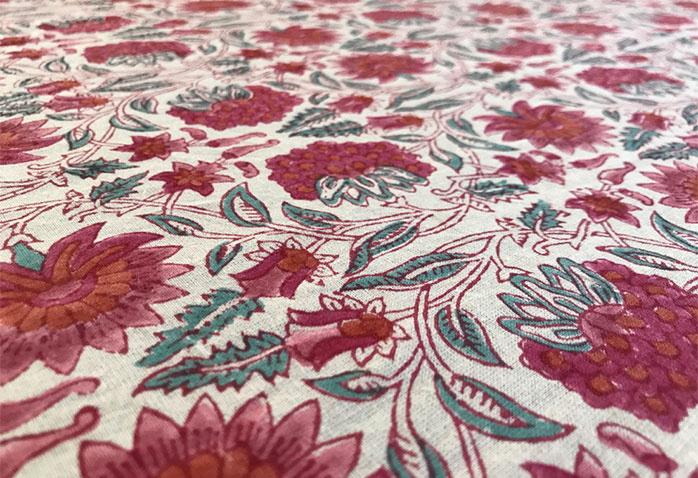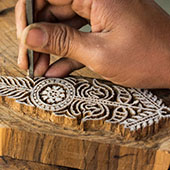India is known the world over for its rich cultural heritage and the depth and variety of arts and crafts. These arts and crafts thrived under the erstwhile patronage of royalty, aristocracy, and the privileged class. Over the years, with the advent of industrialization and rapid growth of mechanical processes substitutes, many of these arts and crafts have languished or have passed into oblivion primarily due to dwindling endorsement of traditional formats.
The art of block making is one such craft that has increasingly lost its earlier standing and appeal as an outcome of reduced demand for traditional block-printed textiles that have gradually ceded ground to automated versions of printed textiles, mostly in the form of the cheaper and easier-to-produce screen and digital prints. The diminishing presence of block-printed fabrics and its associated decline of block-making marks our nation's incredible craft legacy's demise.
Pethapur, however, still stands as a reduced but proud icon of wooden block-making in India, keeping alive a tradition that had its roots in the 18th century. The block-makers in Pethapur continue to be associated with other traditional forms of craft traditions such as Ajrakh and Saudagiri prints. The motifs used have evolved over the years from depicting nature and village life to contemporary motifs dictated purely by changing market demands and preferences. In many instances, it reflects a blend of Indian artistry and Western influence. The earlier bustling production centers have transformed into isolated pockets of the odd craftsman still carrying on the craft.
There is not much documentation available on the art of block-making, especially concerning the process. However, one does find instances of the final products or blocks being recorded in archives or photographic documents. The documentation method of block-making undertakes a relatively uncharted pathway of recording the processes involved through first-hand and extensive interaction with the Pethapur block-making masters. This project is the first of many attempts to preserve the legacy of this most intricate and priceless art. It records major categories of designs and motifs according to their characteristic traits, including visual examples of designs and motifs more than a century old.
The stagnation of the craft of block-making can perhaps be transformed through concerted and collaborative efforts to document and preserve design archives and ensure institutional support for the remaining artisans, including sensitization towards entrepreneurship and contemporary design and market trends.

A Floral Block-print from Bagru, Rajasthan

